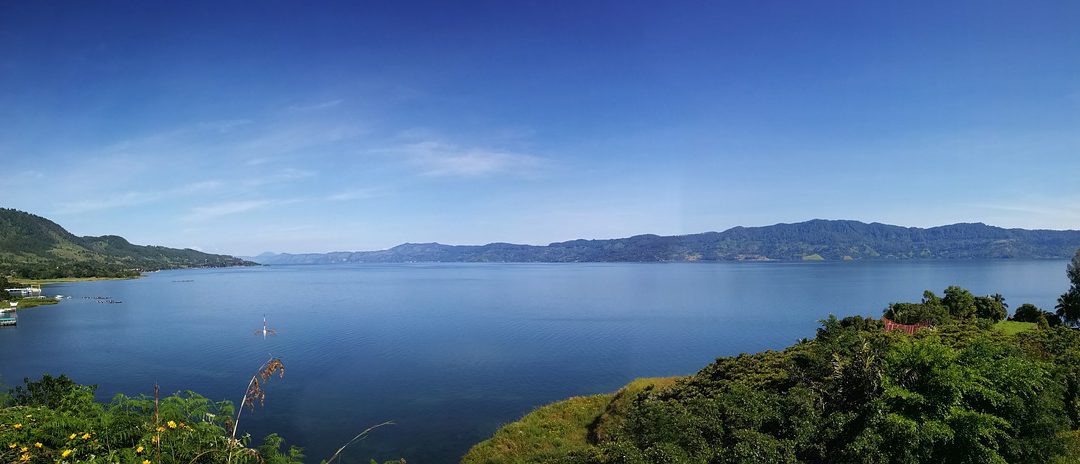There are many reasons why you should come to Sumatra, Indonesia. There is the unspoiled nature of Sumatra with its tropical flora and fauna; you can see the Orang Utan in the wild, the impressive Lake Toba, the world’s biggest Crater Lake, white sandy beaches to snorkel and beautiful coral reefs for diving, the friendly people, the delicious food, the sunny days ,the relaxed atmosphere, the Sumatran elephants, the different ethnic tribes with their unique cultures, food, dances, architecture, handcrafts, languages, religion, fashion, food recipes, you can experience all this on Sumatra, the sixth largest island in the world.
Here are the 7 reasons why you should visit Sumatra:
1. History
One of the earliest accounts from a European about Sumatra was from the Italian discoverer Marco Polo who visited the island in the year 1292. Marco Polo referred to Sumatra as the named the kingdom Samara or Samarcha in the late 13th century, while the 14th century traveller Odoric of Pordenone used Sumoltra for Samudra. Subsequent European writers then used similar forms of the name for the entire island.
Before that the Sriwijaya Kingdom in Southern Sumatra had already been in contact with Java, China and India. In the sixteenth century came the Arab traders, then the British, and from the middle of the 19th century till 1942 the colonial Dutch ruled the island. The Japanese ruled for three years, and consequently followed Indonesia’s independence in 1945.
2. Cultural diversity
Sumatra with its fascinating history of the Malay coastal population, the Batak tribes from the highlands and the Minangkabau people from Western Sumatra with their unique matrilineal system combined with Islam.
The Batak highlands around the huge lake Toba with the island of Samosir in the middle, is a place of unforgettable natural beauty. The Batak people who reside in these regions had until the mid-19th century little contact with the outer world which made that they kept their ancient animist culture and traditions. Not before half of the 19th century, German missionaries managed to enter these interior regions and converted many Batak into Christianity, where nowadays many Batak people adhere to the Protestant religion.
The local Batak culture, divided among the Karo, Toba, Mandailing and Pak Pak Batak is unique, each with their own language, textiles, the so called ‘ulos’, with each region its own colouring and weaving techniques, which once more also differed from the Minangkabau ethnic group in Western Sumatra. The same counts for music, dances and visual arts. Each ethnic tribe had its characteristic. Concerning the music, especially the Toba Batak are famous singers, probably the Lake plays a factor in this, as you can hear the Batak singing their songs for many kilometres over the wide Toba waters.
In the nineteenth century hundreds of thousands of Chinese and Javanese people were recruited by plantation companies to work on the tobacco, later rubber and palm oil plantations in the districts of Deli, Serdang, Langkat and Asahan. All this caused a huge influx of immigrants of Chinese and Javanese and many of their descendants still reside here today. The Chinese and Javanese were searching for a better life on and many of them found this on Sumatra. That is why there are today living so many Javanese and Chinese in Northern Sumatra.
Concerning the Chinese, from the end of the nineteenth century a so called Chinese diaspora started, whereby many fled hunger and poverty stricken southern China, and left for countries like the Philippines, Vietnam, Malaysia, Thailand and Indonesia, including Sumatra. In some cases the Chinese settlers became the dominant group like in the city state of Singapore. In Medan the Chinese ethnic group still consists of around 10% of the population.
Another sign of the cultural diversity are the different architectural styles like the traditional Malay houses on stilts, the Batak and Minangkabau houses on stilts with their characteristic protruding saddle roof structures, Chinese classic architecture and colonial buildings. All these different architectural styles on Sumatra can still be seen till today and are another example of cultural and ethnic diversity.
3. Food
As Sumatra is on the equator with much rainfall and also the presence of several volcanoes, almost every agricultural crop can grow on the island, the high temperatures in combination with rain, and the fertile volcanic soil ensure the freshest ingredients. Other unique products from Sumatra are the aromatic, and tasty Sumatran coffees, especially the Mandheling coffee from middle Sumatra, and the Gayo coffee from the Aceh province where Robusta and Arabica coffees are grown. Besides that on this tropical island, countless tropical fruits such as pineapples, mangosteen, marquisa, papaya, bananas and many more grow abundantly.
Indonesia offers many culinary treasures. In 2011, rendang, the scrumptious meat dish from West Sumatra, was crowned the best dish in CNN’s World’s 50 Best Foods.
4. Landscape
Java is famous for its temples like the impressive Buddhist Borobudur and Prambanan Hindu temples. With Jogyakarta and the kraton as cultural centre of Java, its beautiful rice fields and lovely landscapes, then there are metropoles like Jakarta and Surabaya as important political, economic and cultural centres. Bali is world famous for its luxury hotels, beautiful beaches, and unique Hindu culture with Hindu temples, Sumatra is most famous for its vast unspoiled jungle, the largest volcanic crater lake in the world, the Lake Toba, and the highest volcano in Indonesia, The Kerinci (3850 m.)
5. Flora & fauna (wildlife)
Sumatra is the last place where Elephants, Tigers, Rhinos, and Orangutans still coexist in the wild and the tallest and biggest flower in the world, the Rafflesia which can grow until 3 feet across and weigh up to 15 pounds!
6. Shopping paradise
From traditional markets and shops to world class shopping malls, Sumatra is home to boundless shopping opportunities.
7. Locality/accessibility
Sumatra is only one hour away from the two important South East Asian hubs, Kuala Lumpur and Singapore.
Tri Jaya Tour and Travel is looking forward to welcoming you.
 Dutch
Dutch
